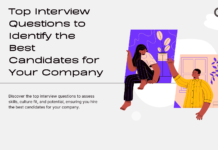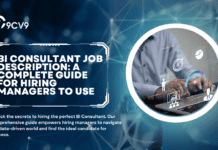Key Takeaways
- 2025 HR success relies on leveraging AI and data analytics for smarter recruitment, retention, and performance management strategies.
- Hybrid work models, skills-based hiring, and employee well-being are key drivers of workforce engagement and productivity in 2025.
- Staying informed on evolving workplace trends and benchmarking HR efforts with relevant data ensures a competitive edge in talent management.
In the fast-evolving landscape of human resources, staying ahead of the curve is not optional—it’s essential. As we move deeper into 2025, the HR function continues to undergo profound transformations driven by rapid advancements in technology, changing workforce dynamics, and shifting employee expectations. From AI-powered recruitment tools and skills-based hiring frameworks to hybrid work policies and DEI commitments, every aspect of the employee lifecycle is being reshaped. To navigate these changes successfully, HR professionals must be data-driven, strategic, and deeply informed about the latest industry trends and benchmarks.

This is where accurate, timely, and actionable data becomes indispensable. Whether you’re crafting a talent acquisition strategy, refining your performance management processes, or developing employee engagement programs, understanding the broader trends and statistical shifts in HR is crucial. The human resources field in 2025 is defined by agility, personalization, and digital enablement. HR leaders are now expected to deliver not only operational excellence but also strategic impact aligned with business goals—using data as their compass.
This comprehensive guide curates over 100 of the most important HR statistics, insights, and trends every HR leader, manager, and practitioner should know in 2025. It consolidates authoritative data from global surveys, research reports, and HR tech platforms to provide a 360-degree view of the current state of human resources. From recruitment and retention to workforce well-being and employee experience, each statistic is selected to help you make informed decisions, identify opportunities, and anticipate challenges before they arise.
In a year where economic volatility, technological disruption, and evolving workplace values are converging, the ability to interpret and act on HR data is what separates thriving organizations from struggling ones. This blog not only highlights the key numbers but also explains what they mean for your HR strategies moving forward. It’s not just about knowing the figures—it’s about understanding their impact and translating them into measurable value for your people and your business.
Whether you’re an HR director leading organizational change, a talent acquisition specialist optimizing recruitment funnels, a learning and development expert enhancing skills frameworks, or a people analytics professional leveraging data for insights, this in-depth resource is tailored to support your mission. By the end, you’ll have a well-rounded, up-to-date, and actionable understanding of what’s driving HR success in 2025—and how to harness it within your own organization.
Ready to future-proof your HR strategy? Dive into the most relevant and revealing HR statistics, data, and trends that are shaping the workplace in 2025.
Before we venture further into this article, we would like to share who we are and what we do.
About 9cv9
9cv9 is a business tech startup based in Singapore and Asia, with a strong presence all over the world.
With over nine years of startup and business experience, and being highly involved in connecting with thousands of companies and startups, the 9cv9 team has listed some important learning points in this overview of the 100+ Statistics, Data & Trends Every HR Must Know.
If your company needs recruitment and headhunting services to hire top-quality employees, you can use 9cv9 headhunting and recruitment services to hire top talents and candidates. Find out more here, or send over an email to [email protected].
Or just post 1 free job posting here at 9cv9 Hiring Portal in under 10 minutes.
100+ Statistics, Data & Trends Every HR Must Know
Recruitment and Hiring Statistics
- According to recent global surveys, approximately 72% of employers worldwide report significant difficulties in finding candidates who meet their required qualifications and skill sets, highlighting the ongoing talent shortage crisis in 2025.
- On average, organizations are experiencing a time-to-fill metric of 44 days per open position, indicating that it takes well over a month to successfully recruit and onboard new employees in the current competitive labor market.
- More than 61% of human resource leaders identify the shortage of qualified talent as the most pressing challenge they face when attempting to hire new employees, underscoring the urgency for innovative recruitment strategies.
- Nearly half of all job candidates, specifically 48%, reject job offers primarily because the salary offered is not competitive enough relative to their expectations or market standards, which forces companies to reconsider their compensation packages.
- In response to the increasingly competitive hiring environment, 34% of companies have reported increasing their recruitment budgets in 2025 to attract and secure the best talent available.
- A substantial 79% of recruiters have integrated artificial intelligence tools into their candidate screening processes, which helps streamline hiring and improve the quality of shortlisted applicants.
- Over half of HR teams, approximately 53%, plan to allocate additional resources and increase their budgets for recruitment automation technologies to enhance efficiency and reduce manual workload.
- Chatbots have become a common feature in recruitment, with 37% of companies utilizing these AI-powered conversational agents to engage candidates and answer routine queries during the hiring process.
- The adoption of AI-driven hiring solutions has resulted in a significant 35% reduction in the average time-to-hire, allowing companies to fill vacancies more quickly and reduce productivity gaps.
- Around 64% of candidates now expect personalized, automated communication throughout the recruitment journey, reflecting the growing importance of candidate experience and engagement.
- Employer branding has become a critical factor in attracting talent, with 75% of candidates conducting research on a company’s reputation before deciding to apply for a job.
- Poor user experience on career websites causes approximately 40% of candidates to abandon their job applications midway, which highlights the need for companies to optimize their online recruitment platforms.
- Organizations with a strong employer brand can reduce their hiring costs by as much as 43%, demonstrating that investing in reputation management yields measurable financial benefits.
- An overwhelming 92% of job seekers consider a company’s reputation as a decisive factor before accepting a job offer, emphasizing the power of employer branding in recruitment success.
- The global average cost-per-hire in 2025 stands at $4,683, encompassing all expenses related to sourcing, interviewing, and onboarding new employees.
- Companies with a well-established employer brand can cut their hiring costs by up to 50% and attract twice the number of qualified applicants compared to those without a strong brand presence.
- Employee referrals, LinkedIn, and social media platforms remain the top three channels used by organizations for sourcing candidates, reflecting their effectiveness in reaching passive and active job seekers.
- Talent shortages have reached an all-time high in 2025, with 76% of employers reporting difficulties in filling critical roles due to a lack of qualified applicants.
- More than half of HR hiring managers, specifically 57%, plan to increase staffing levels in early 2025 in response to anticipated company growth and expansion initiatives.
- Additionally, 53% of HR managers cite employee turnover as a primary reason for increasing hiring efforts, underscoring the need to replace departing staff promptly.
Employee Turnover and Retention
- Industry forecasts indicate that approximately 80% of employees are expected to change jobs at least once during the year 2025, reflecting a highly dynamic and mobile workforce.
- Organizations that implement a structured and comprehensive onboarding process report an 82% improvement in new hire retention rates, demonstrating the critical role of effective integration in employee longevity.
- The use of turnover dashboards has become essential for HR teams to identify costly turnover trends in real time, enabling the development of targeted retention strategies that minimize employee attrition.
- Although turnover rates vary significantly by industry and job function, they remain a critical metric for human resource management due to their direct impact on organizational stability and costs.
- High employee turnover imposes substantial financial burdens on companies, including recruitment expenses, lost productivity, and training costs, which can severely affect overall business performance.
Employee Engagement and Performance
- Employee engagement is widely recognized as one of the strongest predictors of organizational success, with highly engaged employees contributing more effectively to company goals.
- Organizations with higher levels of employee engagement experience significantly lower absenteeism rates and reduced staff turnover, which translates into operational efficiencies.
- Engaged employees tend to be more productive, motivated, and committed to their work, resulting in improved individual and team performance across the board.
- The deployment of real-time people analytics tools allows HR managers to proactively identify engagement issues and implement timely interventions to boost morale and productivity.
- Companies that leverage HR analytics for evidence-based management report enhanced decision-making capabilities, leading to improved workforce performance and business outcomes.
Diversity, Equity, Inclusion & Belonging (DEI&B)
- In 2025, approximately 72% of companies have placed pay equity at the top of their organizational agenda, reflecting a growing commitment to closing compensation gaps across different employee groups.
- Diversity dashboards are increasingly used to track workforce representation by gender, ethnicity, and management levels, enabling organizations to monitor progress toward inclusion goals.
- Despite progress, women, LGBTQ+ women, and people with disabilities continue to experience workplace microaggressions, which negatively impact their job satisfaction and career advancement.
- DEI&B initiatives are subject to increasing regulatory scrutiny, requiring companies to maintain compliance through ongoing monitoring and reporting of diversity metrics.
- Artificial intelligence tools employed in HR functions are designed to prioritize fairness and reduce bias in hiring, promotions, and performance evaluations, supporting equitable workforce practices.
HR Technology and AI Adoption
- It is projected that by 2025, 80% of organizations will be utilizing artificial intelligence technologies for workforce planning activities, enabling more accurate forecasting and resource allocation.
- Approximately 70% of employees expect their employers to provide personalized, AI-driven career development plans that align with their skills and aspirations.
- AI integration in HR encompasses predictive modeling, intelligent automation, and natural language processing, which together transform traditional HR processes into more efficient and data-driven workflows.
- As noted earlier, 79% of recruiters now use AI tools to screen candidates, improving the speed and quality of hiring decisions.
- More than half of HR teams, 53%, are planning to increase their budgets for recruitment automation technologies to further streamline candidate sourcing and selection.
- The adoption of AI-driven hiring solutions has led to a 35% reduction in time-to-hire, enabling organizations to fill vacancies faster and reduce operational disruptions.
- Chatbots have become a popular recruitment tool, with 37% of companies employing them to engage candidates and provide instant responses to frequently asked questions.
- The shift from static quarterly HR reports to real-time analytics dashboards provides HR leaders with immediate insights into workforce trends and issues.
- AI-powered recommendation engines offer bias-free, data-backed insights that assist HR professionals in making fair and effective decisions regarding talent management.
Workforce Planning and Skills Development
- Upskilling and closing skill gaps remain among the top priorities for HR departments in 2025, as companies strive to maintain workforce competitiveness in rapidly evolving industries.
- HR leaders emphasize the importance of training and development programs alongside recruitment and compensation to build a more capable and adaptable workforce.
- Data-driven HR decisions, supported by advanced analytics, enable organizations to improve workforce performance while optimizing labor costs.
- As previously mentioned, 57% of HR hiring managers cite company growth as a key driver for increasing staffing levels in 2025.
- Similarly, 53% of HR managers report that employee turnover is a significant factor motivating their hiring plans.
Cost and Financial Impact
- The global average cost-per-hire in 2025 is estimated at $4,683, reflecting the total expenses incurred from sourcing candidates to onboarding new employees.
- Organizations with strong employer branding can reduce their hiring costs by up to 50%, demonstrating the financial benefits of investing in reputation management.
- Turnover dashboards enable companies to visualize and manage the financial impact of employee attrition, helping to identify costly trends and implement retention measures.
- Companies that develop effective retention strategies realize substantial savings by reducing expenses related to recruiting and training replacement employees.
Employee Well-being and Experience
- Employee engagement scores, derived from quantitative survey data, are widely used to measure workplace satisfaction and identify areas for improvement.
- Real-time analytics tools help HR teams detect early signs of employee dissatisfaction or disengagement, allowing for timely interventions.
- Pay equity is prioritized by 72% of companies as a key factor in improving employee satisfaction and fostering a fair workplace environment.
- Advanced HR analytics now measure subtle workplace dynamics such as microaggressions and inclusion, providing deeper insights into employee experiences.
HR Roles and Employment Data
- The unemployment rate for payroll and timekeeping clerks was recorded at a low 1.1% in the fourth quarter of 2024, indicating strong demand for these roles.
- Human resource managers experienced an unemployment rate of just 0.6% in late 2024, reflecting the stability and importance of this profession.
- Training and development specialists had an unemployment rate of 1.3% in the final quarter of 2024, demonstrating steady employment opportunities.
- Compensation and benefits specialists saw an unemployment rate of 1.7% during the same period, indicating relatively strong labor market conditions.
Additional Quantitative HR Metrics to Track in 2025
- The Employee Engagement Score, a quantitative index derived from comprehensive surveys, provides organizations with measurable insights into workforce motivation and satisfaction.
- Turnover Rate percentages, broken down by department and role, help HR teams identify high-risk areas and tailor retention efforts accordingly.
- Time to Fill Positions, measured in average days, remains a critical metric for assessing recruitment efficiency.
- Cost per Hire, expressed in dollars, quantifies the financial investment required to recruit new employees.
- Absenteeism Rate percentages indicate the proportion of workdays lost due to employee absence, impacting productivity.
- Internal Mobility Rate percentages track the frequency of promotions and lateral transfers within the organization, reflecting career development opportunities.
- Training Effectiveness Scores, based on post-training assessments, evaluate the impact of learning programs on employee skills.
- Diversity Representation percentages by gender and ethnicity provide a snapshot of workforce inclusivity.
- Pay Equity Ratios compare median salaries across demographic groups to assess compensation fairness.
- Employee Net Promoter Score (eNPS) quantifies employee willingness to recommend their workplace to others.
- The percentage of the workforce using AI-driven career development tools measures adoption of technology-enabled growth opportunities.
- The proportion of the HR budget allocated to technology and analytics reflects organizational investment priorities.
- The percentage of HR decisions supported by real-time analytics indicates the extent of data-driven management.
- The percentage of employees reporting microaggressions provides insight into workplace inclusivity challenges.
- The percentage of employees participating in upskilling programs signals organizational commitment to continuous learning.
- The percentage of companies with formal DEI&B policies reflects the prevalence of structured inclusion efforts.
- The percentage of HR teams using dashboards for decision-making demonstrates the adoption of modern analytics tools.
- The percentage reduction in time-to-hire due to AI adoption quantifies efficiency gains from technology.
- The percentage of candidates abandoning applications due to poor user experience highlights the importance of digital recruitment platforms.
- The percentage of companies increasing hiring budgets due to talent shortages shows organizational responses to labor market challenges.
- The percentage of employees changing jobs annually (turnover rate) reflects workforce mobility.
- The percentage of HR roles experiencing below-average unemployment rates indicates strong labor demand.
- The percentage of companies tracking pay equity metrics shows commitment to compensation fairness.
- The percentage of companies using AI for workforce planning reveals the extent of technology integration.
- The percentage of companies with real-time people analytics in place indicates the maturity of HR data capabilities.
- The percentage of HR leaders prioritizing employee engagement in 2025 reflects strategic focus areas.
- The percentage of companies reporting pay equity as a top agenda item underscores growing attention to compensation fairness.
- The percentage of organizations using AI Recommendation Engines for HR decisions demonstrates AI adoption in strategic talent management.
- The percentage of companies investing in recruitment automation highlights ongoing digital transformation.
- The percentage of HR teams tracking diversity metrics via dashboards shows analytical rigor in DEI efforts.
- The percentage of companies with formal onboarding processes improving retention illustrates best practices in talent integration.
- The percentage of HR budgets spent on training and development reflects investment in workforce capability.
- The percentage of companies measuring employee sentiment in real time indicates advanced engagement monitoring.
- The percentage of companies reporting turnover costs as a significant expense highlights financial impacts.
- The percentage of HR teams using predictive attrition models shows advanced analytics adoption.
- The percentage of companies reporting increased use of chatbots in recruitment indicates growing reliance on AI tools.
- The percentage of companies with measurable DEI&B outcomes reflects accountability in inclusion initiatives.
- The percentage of companies using AI to reduce hiring bias demonstrates commitment to fairness.
- The percentage of companies reporting improved performance due to HR analytics highlights the value of data-driven HR.
- Finally, the percentage of HR leaders citing talent acquisition as a top strategic priority for 2025 underscores the critical importance of recruitment in organizational success.
Conclusion
As we conclude this comprehensive overview of over 100 essential HR statistics, data points, and trends shaping 2025, one truth stands clear: human resources is no longer a support function—it is a strategic driver of organizational success. From leveraging AI in talent acquisition and predictive analytics in workforce planning, to prioritizing employee well-being, diversity, and continuous learning, today’s HR leaders are navigating a complex, rapidly shifting landscape. The decisions made by HR professionals now directly influence productivity, innovation, culture, and long-term business resilience.
The insights outlined in this blog serve not just as numbers or trends but as a roadmap for smarter, more informed decision-making. They underscore the urgent need for HR teams to embrace data literacy, adapt to new technologies, and remain agile in response to emerging workforce demands. Whether it’s responding to the rise of skills-based hiring, managing hybrid and remote teams, optimizing the employee experience, or tracking metrics that align with ESG (Environmental, Social, and Governance) goals, HR in 2025 is defined by its capacity to evolve—and lead that evolution.
Moreover, the growing emphasis on data and trends in HR reflects a broader organizational shift toward evidence-based management. Companies that harness real-time data to improve recruitment, retention, performance, and employee engagement will consistently outperform those that rely solely on intuition or outdated practices. In this context, HR professionals must act as both strategists and analysts, balancing the human element with actionable metrics to build workplaces that attract top talent, foster innovation, and enable growth.
As workplace expectations continue to transform—driven by generational shifts, technological disruptions, and global socio-economic changes—the HR department of the future will be one that is proactive, tech-enabled, and deeply aligned with business priorities. The insights gathered here are designed to help you benchmark your efforts, identify gaps, and gain clarity on where to focus your energy in the months ahead.
Ultimately, these 100+ statistics and trends are more than just information—they are tools for empowerment. They allow HR professionals to advocate for smarter policies, justify investments in people and technology, and guide leadership toward sustainable growth. In a world where talent is the most valuable asset, and where agility is a competitive advantage, staying informed is not optional—it is foundational.
Whether you’re a CHRO steering enterprise-wide transformation, a people analytics specialist fine-tuning KPIs, or an HR manager enhancing daily workflows, the knowledge gained from this data can help you lead with confidence and clarity in 2025 and beyond. Keep this resource bookmarked, share it with your team, and refer back often—it’s a critical companion in the evolving journey of modern human resources.
Stay curious, stay data-driven, and above all, stay committed to building workplaces that are not only efficient but also inclusive, adaptive, and human-centered. The future of HR is already here. The question is: are you ready to lead it?
If you find this article useful, why not share it with your hiring manager and C-level suite friends and also leave a nice comment below?
We, at the 9cv9 Research Team, strive to bring the latest and most meaningful data, guides, and statistics to your doorstep.
To get access to top-quality guides, click over to 9cv9 Blog.
People Also Ask
What are the top HR trends for 2025?
The top HR trends for 2025 include AI-driven recruitment, skills-based hiring, diversity, equity and inclusion (DEI), hybrid work models, and a focus on employee well-being and experience. These trends reflect the ongoing shift towards a more flexible, tech-enabled workforce.
How is AI shaping HR in 2025?
AI is revolutionizing HR by automating recruitment processes, improving talent acquisition strategies, and providing predictive analytics for employee engagement and performance. AI also enhances diversity and inclusion efforts by reducing unconscious bias in hiring decisions.
What are the key HR statistics to watch in 2025?
Key HR statistics in 2025 include data on hybrid work adoption, employee turnover rates, the impact of AI on recruitment, DEI progress, and employee well-being metrics. These statistics are crucial for driving effective, data-driven HR strategies and decision-making.
How will hybrid work affect HR in 2025?
Hybrid work will require HR departments to rethink policies on communication, performance management, and employee engagement. HR will focus on creating flexible work environments that accommodate both in-office and remote employees while maintaining productivity and culture.
Why is data analytics important for HR in 2025?
Data analytics helps HR professionals make informed decisions about recruitment, employee engagement, and retention. It allows HR teams to predict trends, optimize workforce management, and measure the success of various HR initiatives based on real-time data.
What role does employee well-being play in HR strategies for 2025?
Employee well-being is a top priority in 2025, with HR focusing on mental health support, work-life balance, and overall employee satisfaction. Well-being initiatives help improve productivity, reduce turnover, and foster a positive company culture.
How can HR improve employee retention in 2025?
HR can improve retention by offering flexible work options, enhancing career development opportunities, and promoting a culture of inclusivity and recognition. Personalized employee experiences and continuous feedback also play a key role in reducing turnover.
What is skills-based hiring, and why is it important in 2025?
Skills-based hiring focuses on evaluating candidates based on their abilities rather than traditional qualifications like degrees. It’s important in 2025 as organizations prioritize finding talent with the right skill sets to meet changing business needs and overcome talent shortages.
How will diversity, equity, and inclusion (DEI) evolve in HR by 2025?
DEI efforts will become more integrated into organizational strategies, with HR playing a crucial role in promoting diverse hiring practices, fostering inclusive work cultures, and ensuring equal opportunities for all employees. Metrics for DEI progress will be tracked and reported more transparently.
What HR tools and technologies are essential in 2025?
Essential HR tools for 2025 include AI-driven recruitment platforms, employee engagement software, learning management systems (LMS), people analytics tools, and performance management systems. These technologies help HR teams work more efficiently and drive better employee outcomes.
How will remote work impact HR policies in 2025?
Remote work will push HR to develop policies that support flexible hours, remote team collaboration, and virtual employee engagement. HR will need to address challenges like maintaining productivity, managing remote teams, and ensuring fair access to career growth opportunities.
What are the benefits of AI in recruitment?
AI in recruitment streamlines the hiring process by automating candidate sourcing, screening, and matching. It enhances candidate experience, reduces bias, and helps identify the best-fit candidates more quickly and efficiently, leading to better hiring outcomes.
What role does employee experience play in HR in 2025?
Employee experience will be a key focus for HR in 2025, as organizations strive to create workplaces where employees feel valued and engaged. HR will tailor experiences that align with individual preferences, fostering a more motivated and productive workforce.
How can HR support employee growth and development in 2025?
HR can support employee growth by offering personalized learning opportunities, career progression plans, and regular performance feedback. By fostering a growth mindset, HR helps employees enhance their skills, leading to greater job satisfaction and retention.
What is the impact of the gig economy on HR in 2025?
The gig economy will influence HR by requiring flexible work policies that accommodate freelance and contract workers. HR will need to ensure fair compensation, benefits, and career development opportunities for non-traditional employees who are part of the gig workforce.
What are the challenges HR faces in 2025?
Challenges HR faces in 2025 include managing remote and hybrid teams, addressing employee burnout, adapting to rapid technological changes, and building diverse, equitable workplaces. HR professionals must continuously evolve to meet the needs of an increasingly complex workforce.
How can HR leverage employee feedback in 2025?
HR can leverage employee feedback by using surveys, focus groups, and performance reviews to identify areas for improvement in the workplace. Analyzing feedback allows HR to adjust strategies, improve employee engagement, and address concerns before they lead to turnover.
Why is HR data-driven decision-making essential in 2025?
Data-driven decision-making allows HR professionals to make informed choices based on objective data rather than intuition. This approach enhances efficiency, reduces bias, and ensures HR strategies align with organizational goals, leading to improved business outcomes.
What are the key HR challenges in managing hybrid teams in 2025?
Key challenges in managing hybrid teams include maintaining team cohesion, ensuring equal access to opportunities, managing productivity remotely, and overcoming communication barriers. HR must adapt leadership styles and communication strategies to support both in-office and remote employees.
How can HR foster a culture of innovation in 2025?
HR can foster a culture of innovation by encouraging continuous learning, promoting collaboration, and recognizing creative problem-solving. Supporting cross-functional teams, providing resources for skill development, and rewarding innovative ideas are key ways HR can drive innovation.
What is the future of performance management in HR by 2025?
The future of performance management in HR will shift towards continuous feedback, personalized development plans, and data-driven insights. Traditional annual reviews will be replaced by real-time evaluations that focus on growth, achievement, and alignment with organizational goals.
What impact will automation have on HR processes in 2025?
Automation will streamline many HR processes, such as payroll, benefits management, and onboarding. By automating repetitive tasks, HR teams can focus on more strategic functions, improving efficiency and providing a better employee experience.
How can HR enhance employee engagement in 2025?
HR can enhance employee engagement by offering flexible work options, recognizing achievements, creating career development opportunities, and fostering an inclusive workplace culture. Regular feedback and personalized experiences also help boost engagement levels.
What is the role of HR in managing workplace burnout in 2025?
HR plays a crucial role in identifying the signs of burnout and implementing preventive measures. By promoting work-life balance, offering mental health support, and encouraging a healthy work culture, HR can help employees manage stress and maintain productivity.
How can HR use people analytics for better decision-making?
People analytics enables HR to analyze data related to recruitment, retention, employee performance, and engagement. By making data-driven decisions, HR can optimize talent strategies, improve employee experiences, and align HR efforts with business outcomes.
What HR metrics will be crucial in 2025?
Key HR metrics in 2025 include employee engagement scores, turnover rates, recruitment efficiency, diversity and inclusion progress, and employee well-being metrics. These indicators help HR teams assess the effectiveness of their strategies and make improvements.
What is the impact of employee benefits on HR strategies in 2025?
Employee benefits will be a key factor in attracting and retaining talent in 2025. HR will need to offer competitive benefits packages that align with employee needs, such as health insurance, flexible working arrangements, and wellness programs, to stay ahead in the talent market.
How will employee training evolve in 2025?
Employee training will become more personalized, using technology to deliver adaptive learning experiences. Microlearning, on-demand training modules, and gamified learning platforms will be common, enabling employees to learn at their own pace and apply new skills immediately.
What HR strategies will help manage workforce diversity in 2025?
HR strategies for managing workforce diversity in 2025 will focus on implementing inclusive hiring practices, fostering an environment of belonging, and promoting leadership diversity. HR will also measure DEI progress and create initiatives that support diverse employees at every level.
What is the future of talent acquisition in 2025?
The future of talent acquisition will be shaped by AI-driven recruiting tools, data analytics, and a focus on diversity and skills-based hiring. Talent acquisition teams will prioritize cultural fit and employee potential, alongside traditional qualifications, to build a strong, adaptable workforce.
How can HR improve communication in a hybrid workforce?
HR can improve communication in a hybrid workforce by adopting collaboration tools, setting clear communication guidelines, and fostering a culture of transparency. Regular check-ins, virtual team-building activities, and clear communication channels are essential for remote and in-office employees.
What HR innovations should be expected in 2025?
Expect HR innovations such as AI-based talent management systems, enhanced employee experience platforms, and data-driven performance tools. Additionally, gamification in learning, blockchain for HR data security, and virtual reality for onboarding will transform HR processes in 2025.
Sources
- Recruiters Lineup: Top Recruitment Statistics Every HR Should Know in 2025
- Deloitte Insights: 2025 Global Human Capital Trends
- UserGuiding: HR Statistics and Trends in 2025
- Visier: HR Data Definition and Key Sources (2025)
- PerformYard: 70 Pivotal HR Statistics for 2025
- Ensaantech: 100+ Essential Key HR Statistics (Ultimate Data: 2025)
- Peoplebox.ai: 100+ Recent HR Statistics Updated in May 2025
- Deel: 21 Top HR Automation Statistics and Trends in 2025































![Writing A Good CV [6 Tips To Improve Your CV] 6 Tips To Improve Your CV](https://blog.9cv9.com/wp-content/uploads/2020/06/2020-06-02-2-100x70.png)


